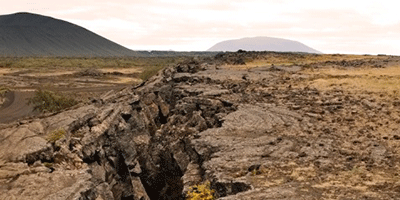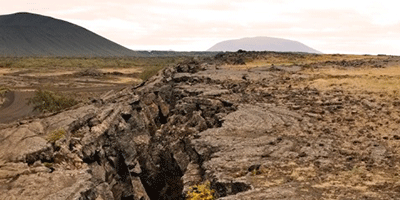Acoustic Trigger For Earthquakes
Big earthquakes often induce smaller quakes, or aftershocks, in geological faults that are sometimes thousands of kilometers away. One explanation is that the acoustic vibrations generated by seismic waves can trigger an aftershock by creating a low-friction, fluidlike state within the fault. New numerical simulations support this so-called acoustic fluidization hypothesis. The work also shows that faults may self-induce seismic activity by spontaneously generating acoustic waves.
The typical earthquake occurs when compressed rocks suddenly slide past each other along a fault line. The rate of these slips is higher than expected from measurements of rock-on-rock friction. Scientists have therefore proposed that sound waves—generated locally or externally—cause fluidlike motion in small grains lodged within the fault. Evidence for this has come from experiments showing that acoustic vibrations can reduce friction in granular materials.
Eugenio Lippiello from the Second University of Naples in Italy and his colleagues explored whether acoustic waves could affect the slip dynamics in a simulated fault system. Their model consisted of two rough plates pressed together with a bed of spherical grains in between. Under an applied shear stress, the plates exhibited occasional slips, just as in real faults. But when the team perturbed their system with externally produced acoustic waves, they found that slipping occurred earlier. As predicted by acoustic fluidization, this “triggering” occurs at a resonant frequency corresponding to waves bouncing back and forth inside the fault. The researchers found that these same resonant waves appeared spontaneously in unperturbed systems a short time before each slip, suggesting that acoustic waves may internally arise inside a fault and trigger a slip a few seconds later.
This research is published in Physical Review Letters.
–Michael Schirber





